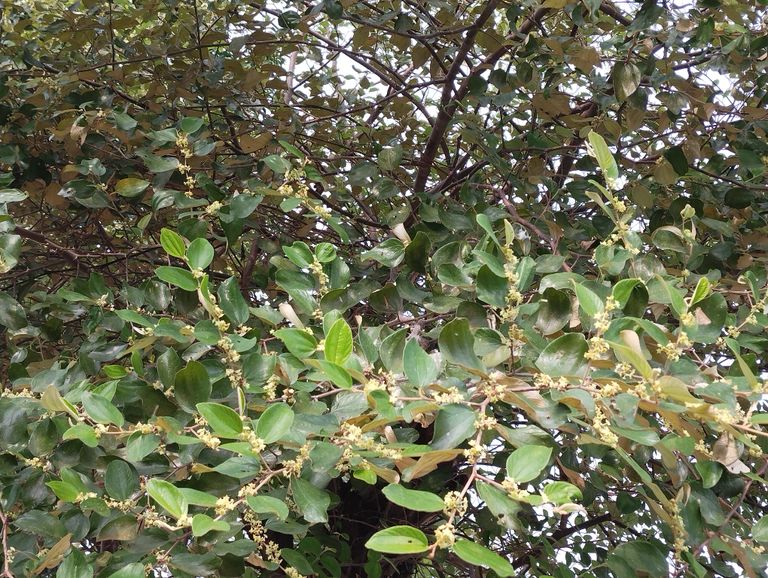
Diseases of Jujube Flowers Boroi Flowers A Comprehensive Overview.
The jujube tree, scientifically known as Ziziphus mauritiana, is widely cultivated in tropical and subtropical regions for its nutritious and delicious fruit, commonly referred to as boroi in Bangladesh, India, and surrounding areas. However, like many fruit-bearing trees, the jujube is not immune to diseases, particularly affecting its flowers. Flower health is crucial to fruit development, so understanding the common diseases of jujube flowers and how to manage them is vital for farmers and cultivators.
This blog delves into the major diseases that affect jujube flowers, their causes, symptoms, and control methods to help in better cultivation and production of jujube fruit.
Major Diseases Affecting Jujube Flowers
- Powdery Mildew (Erysiphe or Podosphaera species)
Cause:
Powdery mildew is a fungal disease caused by Erysiphe or Podosphaera species. It thrives in warm and dry climates but can also affect plants during periods of moderate humidity. Powdery mildew spreads rapidly, especially in poorly ventilated or overcrowded orchards.
Symptoms:
White or grayish powdery growth on flowers, leaves, and stems.
Affected flowers may not develop into fruit or may produce undersized and malformed fruits.
Premature flower drop.
Control Methods:
Cultural Practices: Ensure good air circulation in the orchard by pruning and maintaining proper spacing between trees. Removing affected plant parts also helps in controlling the disease.
Chemical Control: Fungicides containing sulfur or copper-based compounds are effective. Additionally, horticultural oils can be used to prevent the spread of the disease.
Biological Control: Some beneficial fungi, such as Trichoderma, can suppress powdery mildew pathogens naturally.
- Blossom Blight (Botrytis cinerea)
Cause:
Blossom blight, caused by the fungal pathogen Botrytis cinerea, is a common problem in jujube trees, especially in regions with high humidity and cool temperatures during the flowering season.
Symptoms:
Brown spots on flowers that eventually spread to the entire bloom.
Flowers become withered, mushy, and grayish, often covered with a layer of fungal spores.
Affected flowers often fail to set fruit or result in poor-quality fruits.
Control Methods:
Cultural Practices: Proper pruning and spacing to improve air circulation is essential. Avoid overhead watering to reduce humidity around the flowers.
Chemical Control: Fungicides such as captan or iprodione can be used during the flowering period to control the spread of the disease.
Sanitation: Remove and destroy all infected plant material to reduce the source of the fungal spores.
- Anthracnose (Colletotrichum species)
Cause:
Anthracnose is another fungal disease that can affect jujube flowers, caused by various species of Colletotrichum. This pathogen thrives in warm, wet conditions and can spread rapidly in such environments.
Symptoms:
Dark, water-soaked lesions on flowers that can expand over time.
Flowers may become necrotic and fall prematurely.
Lesions may also appear on the stems and leaves, leading to dieback.
Control Methods:
Cultural Practices: Avoid overhead watering to keep foliage and flowers dry. Pruning for better air circulation can also help minimize the spread.
Chemical Control: Regular application of fungicides like mancozeb, copper-based fungicides, or chlorothalonil can effectively manage the disease.
Biological Control: Beneficial microorganisms like Bacillus subtilis may help suppress Colletotrichum species.
- Leaf Rust (Phakopsora species)
Cause:
Leaf rust is a common fungal disease that affects both leaves and flowers. It is caused by Phakopsora species, which can spread via wind-borne spores.
Symptoms:
Rust-colored spots on leaves and flowers.
Premature flower drop, leading to reduced fruit yield.
Affected flowers may turn yellow and become brittle.
Control Methods:
Cultural Practices: Removal of infected plant debris can help in reducing the spread of rust spores. Crop rotation and maintaining healthy plants through balanced fertilization also help.
Chemical Control: Fungicides containing myclobutanil or azoxystrobin are effective in controlling rust outbreaks.
Resistant Varieties: Use of rust-resistant jujube cultivars can significantly reduce the incidence of the disease.
Other Factors Contributing to Flower Diseases
- Weather Conditions
High humidity, prolonged wet conditions, and poor air circulation create an ideal environment for the proliferation of many fungal pathogens. Monitoring weather patterns and taking preventive actions during the flowering period can significantly reduce the risk of diseases.
- Nutrient Deficiency
A lack of essential nutrients, particularly calcium and boron, can weaken jujube flowers and make them more susceptible to diseases. Regular soil testing and appropriate fertilization can improve flower health and reduce disease vulnerability.
- Insect Infestations
Insects such as aphids, thrips, and mites can damage flowers and create entry points for pathogens. Controlling insect populations through integrated pest management (IPM) can reduce the risk of disease development.
Integrated Disease Management (IDM) Approach
An Integrated Disease Management (IDM) approach is essential to maintain healthy jujube flowers and ensure a successful fruit set. IDM involves a combination of cultural, biological, and chemical control methods for sustainable disease management.
- Cultural Practices:
Proper spacing and pruning to ensure good air circulation.
Regular removal of diseased plant parts to reduce inoculum sources.
Timely irrigation that avoids wetting the flowers.
- Biological Control:
Use of beneficial microbes like Trichoderma or Bacillus subtilis to suppress fungal pathogens.
Introducing predatory insects that help control pest populations.
- Chemical Control:
Preventive application of fungicides during the flowering period, particularly in high-risk conditions.
Rotate between different fungicides to prevent the development of resistance.
- Regular Monitoring:
Regularly inspect jujube trees for signs of disease, particularly during the flowering period.
Early detection allows for timely intervention, minimizing the spread of disease and damage.
Conclusion
Maintaining healthy jujube flowers is essential for achieving a good fruit yield. While fungal diseases such as powdery mildew, blossom blight, anthracnose, and leaf rust can be detrimental, proper management practices can significantly reduce their impact. Cultivators should adopt an integrated disease management approach, combining cultural practices, biological control, and chemical treatments to protect their crops effectively.
By following these guidelines and staying vigilant, jujube growers can ensure their flowers remain healthy, leading to higher fruit yields and overall better crop quality.
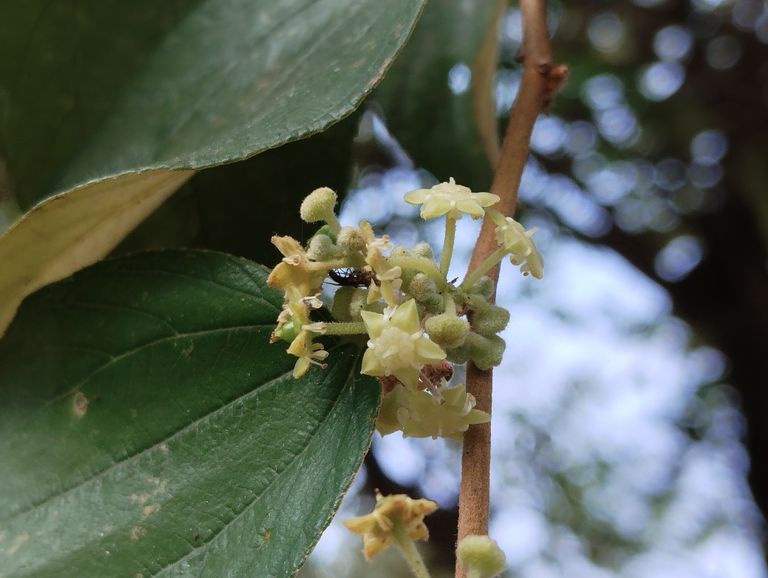
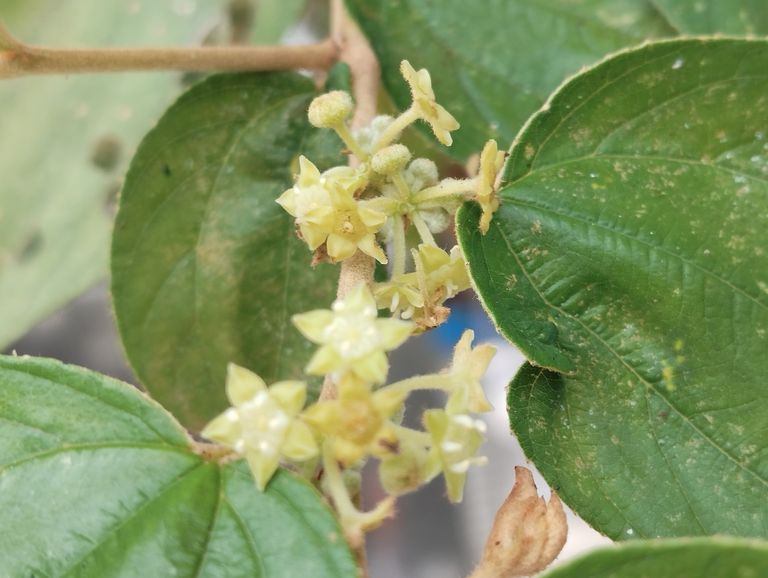
Growing a Jujube Orchard: A Comprehensive Guide
Jujube, locally known as boroi in South Asia, is a hardy and versatile fruit tree that has gained popularity worldwide due to its nutritional benefits and adaptability to diverse climates. The jujube tree (Ziziphus jujuba) is native to China but has spread to various countries, particularly in South Asia, the Middle East, and the Mediterranean. Jujube trees are prized for their ability to thrive in arid and semi-arid regions, making them a sustainable fruit crop option for both small-scale farmers and large commercial operations.
This guide will walk you through the essential aspects of starting and managing a jujube orchard, covering everything from selecting the right cultivar to harvesting and maintaining the trees.
- Understanding Jujube Trees: The Basics
Jujube trees are deciduous, meaning they shed their leaves annually. They can grow up to 10-15 meters in height and have glossy green leaves with thorny branches. The fruits are small, ranging in size from a cherry to a plum, and they are known for their sweet, apple-like flavor when fresh and a date-like texture when dried.
Jujubes are drought-resistant, which makes them ideal for regions where water scarcity is an issue. However, they still need proper care, particularly in their early growth stages, to ensure a healthy yield.
- Selecting the Right Jujube Cultivar
There are over 400 varieties of jujube trees, but not all are suitable for every climate or soil type. Before starting a jujube orchard, research the best varieties for your region. Some popular cultivars include:
Li Jujube: Known for its large, sweet fruits, the Li variety is one of the most popular choices for commercial orchards. It produces high-quality fruits that are excellent for both fresh consumption and drying.
Lang Jujube: Another common variety, Lang is more suited for drying than fresh eating. Its fruits have a tart flavor when fresh but develop a rich, date-like taste when dried.
GA-866: This cultivar is prized for its exceptionally sweet flavor and large fruit size. It’s a slower grower compared to Li and Lang but worth the wait for its superior taste.
Sherwood: Sherwood jujube trees produce smaller fruits than other varieties but are known for their sweet and crisp texture.
- Site Selection and Soil Preparation
Jujube trees can adapt to a wide range of soil types, including sandy, loamy, and clay soils. However, they prefer well-drained soils with a pH level of 5.5 to 7.8. Before planting, it’s essential to test the soil to ensure it meets these conditions.
When selecting a site for your jujube orchard, consider the following:
Sunlight: Jujube trees require full sunlight to produce the best fruit. Choose a location that gets at least 6-8 hours of direct sunlight daily.
Drainage: Good drainage is critical for jujube trees, as they don’t tolerate waterlogged soils. If necessary, amend the soil or create raised beds to improve drainage.
Spacing: Proper spacing is vital for air circulation and tree health. Plant jujube trees at least 4-6 meters apart in rows that are 5-7 meters apart to give them enough room to grow.
- Planting Jujube Trees
The best time to plant jujube trees is in the spring or early fall when temperatures are moderate. You can plant jujube trees either from seeds or from grafted saplings. Grafted trees usually bear fruit earlier than those grown from seed.
Digging the Hole: Dig a hole that is twice the width and depth of the tree’s root ball. This allows the roots to spread easily into the surrounding soil.
Planting Depth: Place the tree in the hole so that the root collar (where the roots meet the trunk) is level with the soil surface. Backfill the hole with a mixture of soil and organic compost.
Watering: Water the tree immediately after planting to help settle the soil and eliminate air pockets. Keep the soil consistently moist, especially during the first year, as the tree establishes its root system.
- Irrigation and Fertilization
While jujube trees are drought-tolerant, they produce better fruit with regular watering. During the first year, water the trees deeply every 7-10 days, depending on rainfall and soil moisture. Once established, they need less frequent watering, but supplemental irrigation during dry periods will enhance fruit size and yield.
Fertilization is essential for promoting healthy growth and fruit production. In the first year, apply a balanced fertilizer (e.g., 10-10-10) in early spring. In subsequent years, switch to a nitrogen-rich fertilizer to encourage strong vegetative growth and fruiting.
- Pollination and Fruit Set
Jujube trees are self-pollinating, meaning they don’t require another tree to produce fruit. However, having more than one tree can increase fruit set and yield due to cross-pollination. In commercial orchards, it’s common to plant different varieties to extend the harvest season and improve pollination efficiency.
Jujube trees typically start bearing fruit after 3-4 years. The flowers, which appear in late spring or early summer, are small and yellowish-green. Fruit development follows, with the harvest season varying depending on the variety and local climate.
- Pruning and Maintenance
Pruning is essential to maintain the tree’s shape, encourage new growth, and improve fruit quality. Prune jujube trees during their dormant season (late winter) by removing dead, diseased, or crossing branches. Thin out crowded areas to allow sunlight to penetrate the canopy, which helps with fruit ripening.
Regular pruning also reduces the risk of pests and diseases. Jujube trees are relatively pest-free, but they can be susceptible to scale insects, mites, and fruit flies. If pests become a problem, use organic insecticides or introduce beneficial insects like ladybugs to control them.
- Harvesting Jujube Fruits
Jujube fruits are ready to harvest when they turn from green to a reddish-brown color. For fresh consumption, pick the fruits when they are fully colored but still firm. For drying, allow the fruits to remain on the tree until they become wrinkled and dark brown.
Harvesting is usually done by hand, although mechanical harvesters can be used in larger orchards. Store fresh jujube fruits in a cool, dry place, or dry them for long-term storage. Dried jujube fruits can last for several months and are often used in traditional medicines, teas, and desserts.
- Economic Potential of Jujube Orchards
The global demand for jujube fruits has been rising due to their health benefits, including high levels of vitamin C, antioxidants, and fiber. Jujube orchards offer a promising opportunity for farmers, especially in regions with marginal soils where other fruit trees struggle to grow.
Moreover, the fruit has a long shelf life, especially when dried, making it a valuable crop for export markets. Whether you're looking to start a small orchard for local markets or a large-scale commercial operation, jujube cultivation can be a profitable and sustainable venture.
Conclusion
Starting a jujube orchard is an exciting and rewarding endeavor. With the right planning, care, and attention to detail, jujube trees can produce bountiful harvests for decades. Whether you’re a small farmer or a large-scale producer, the jujube tree offers a sustainable and resilient crop choice that can thrive in challenging conditions. By selecting the appropriate variety, ensuring proper soil and water management, and maintaining your trees through regular pruning and care, you can enjoy a thriving orchard that contributes both to your local ecosystem and to the global market.
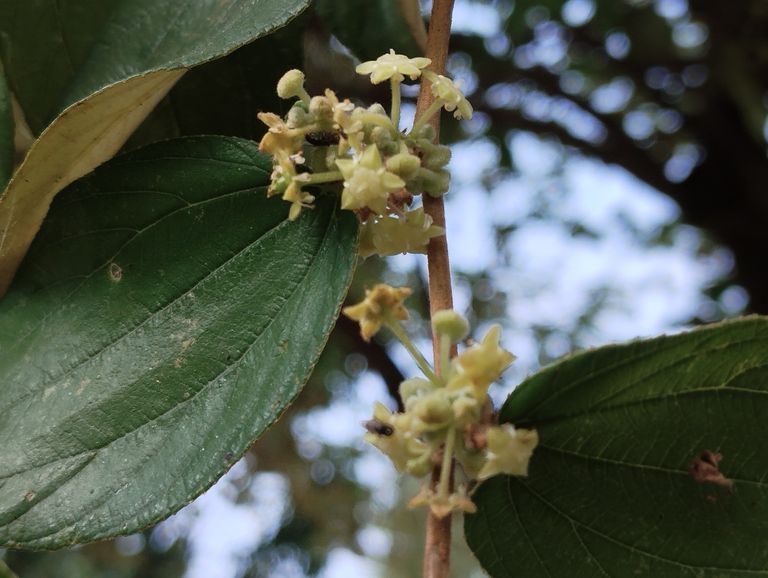
Health Benefits of Jujube Fruit (Boroi)
Jujube, also known as Boroi in Bengali, is a small, nutrient-rich fruit that has been a part of traditional medicine for centuries, especially in Asia and the Middle East. This small yet mighty fruit is known for its sweet-tart flavor and boasts an array of health benefits. In this blog, we will explore the various health benefits of jujube fruit and why it should be a regular part of your diet.
- Rich in Nutrients
Jujube fruit is packed with essential nutrients, making it a valuable addition to your daily diet. It is an excellent source of:
Vitamin C: Jujube is particularly high in vitamin C, which plays a crucial role in boosting immunity, promoting skin health, and fighting infections. A single serving can provide more than 77% of the recommended daily intake.
Antioxidants: Jujube contains powerful antioxidants like flavonoids, phenolics, and polysaccharides, which help neutralize harmful free radicals, reducing oxidative stress and preventing cell damage.
Vitamin A: This vitamin is essential for eye health and helps protect against night blindness and other vision-related issues.
Minerals: Jujube is rich in potassium, which helps regulate blood pressure, and also contains calcium, magnesium, and iron.
- Improves Digestive Health
Jujube fruit is an excellent natural remedy for digestive issues. The high fiber content in jujube helps in smooth bowel movements, preventing constipation and other gastrointestinal problems. The fruit’s natural compounds also help protect the stomach lining, reducing the risk of ulcers and other stomach disorders. Consuming jujube tea or the dried fruit can help soothe the stomach and promote healthy digestion.
- Boosts Immunity
As a powerhouse of vitamin C and other antioxidants, jujube strengthens the immune system. It helps the body fight off infections, bacteria, and viruses more efficiently. Regular consumption of jujube can reduce the duration and severity of colds, flu, and other respiratory illnesses. The fruit also contains saponins and polysaccharides, which have been shown to enhance immune responses.
- Supports Mental Health
Jujube is known for its calming properties and has been used in traditional medicine to reduce anxiety, stress, and insomnia. Compounds like saponins in the fruit have sedative effects, which can help soothe the nervous system and promote better sleep. Drinking jujube tea before bed is a natural remedy for improving sleep quality and combating insomnia.
In addition to promoting relaxation, jujube can also boost cognitive function. The antioxidants present in the fruit help protect brain cells from oxidative damage, reducing the risk of neurodegenerative diseases such as Alzheimer's.
- Promotes Heart Health
Jujube fruit is beneficial for heart health due to its high potassium and low sodium content. Potassium helps relax blood vessels and regulate blood pressure, which reduces the strain on the cardiovascular system. The antioxidants in jujube also help prevent the buildup of cholesterol in the arteries, lowering the risk of atherosclerosis, heart attacks, and strokes.
The fiber in jujube also aids in lowering bad cholesterol (LDL), further protecting heart health. Regular consumption of jujube can contribute to a healthier heart and reduce the risk of cardiovascular diseases.
- Enhances Skin Health
Jujube is rich in antioxidants and vitamins, particularly vitamin C and vitamin A, which are essential for maintaining healthy skin. These vitamins help in collagen production, which improves skin elasticity and reduces signs of aging such as wrinkles, fine lines, and age spots.
The antioxidants in jujube also protect the skin from damage caused by free radicals and environmental factors like pollution and UV radiation. Applying jujube extract or consuming the fruit can help improve skin hydration, reduce acne, and give your skin a youthful glow.
- Helps in Weight Management
If you're looking for a healthy snack that won't add to your calorie count, jujube is an excellent choice. The fruit is low in calories but high in fiber, making it a satisfying snack that can keep you full for longer. This can help curb overeating and prevent weight gain.
Moreover, jujube contains natural sugars, which provide energy without causing spikes in blood sugar levels. It is a great alternative to unhealthy, high-calorie snacks, making it ideal for those on a weight-loss journey.
- Anti-Cancer Properties
Research suggests that jujube has potential anti-cancer properties due to its high antioxidant content. The antioxidants help neutralize free radicals that can cause cancerous cell growth. Some studies have shown that jujube extract can inhibit the growth of certain cancer cells, including those related to leukemia and breast cancer.
The presence of bioactive compounds in jujube, such as polysaccharides and flavonoids, may contribute to its anti-cancer effects. While more research is needed, the current findings are promising, making jujube a valuable addition to a cancer-preventive diet.
- Strengthens Bones
Jujube is rich in essential minerals like calcium, phosphorus, and magnesium, which are vital for maintaining strong and healthy bones. Regular consumption of jujube can help improve bone density and prevent conditions like osteoporosis, especially in older adults.
The fruit also contains anti-inflammatory properties that can help alleviate joint pain and stiffness, making it beneficial for people suffering from arthritis and other bone-related issues.
- Detoxifies the Body
Jujube has natural detoxifying properties that can help cleanse the liver and flush out toxins from the body. The fruit contains compounds that improve liver function and promote the elimination of harmful substances from the body. A healthy liver is essential for overall well-being, and jujube’s ability to support liver health makes it an important fruit for detoxification.
- Fights Inflammation
Chronic inflammation is the root cause of many diseases, including arthritis, diabetes, and heart disease. Jujube contains anti-inflammatory compounds that can help reduce inflammation in the body. These compounds work by inhibiting the production of pro-inflammatory cytokines, which are responsible for triggering inflammation.
Regular consumption of jujube can help reduce the risk of chronic diseases associated with inflammation and improve overall health.
Conclusion
Jujube, or Boroi, is a highly nutritious fruit with a wide range of health benefits. From boosting immunity and promoting heart health to improving digestion and enhancing skin health, this fruit is a natural powerhouse that deserves a place in your diet. Whether consumed fresh, dried, or in the form of tea, jujube can contribute to a healthier and happier life.
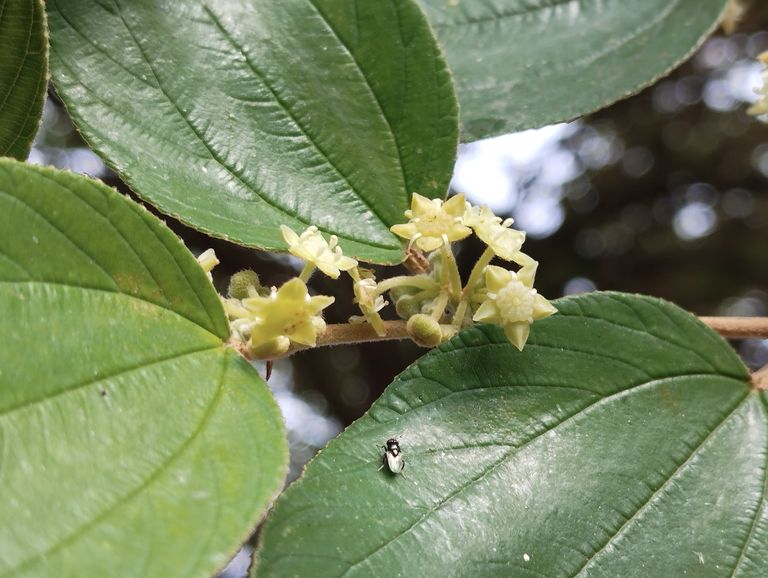
1 votes